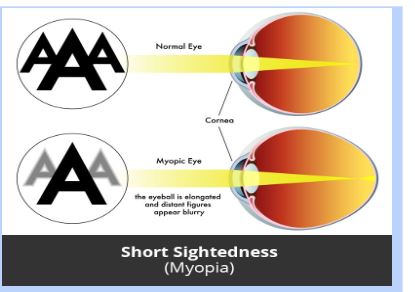Cutting-Edge Presbyopia Treatment Solutions in Singapore
Presbyopia is a common condition that affects millions of people worldwide. It occurs when the eyes gradually lose their ability to focus on nearby objects, resulting in blurry vision and difficulty in reading small print. In Singapore, presbyopia can be treated with a variety of corrective lenses and surgical procedures.
This article will provide an overview of the different treatments available for elite presbyopia treatment in Singapore, including glasses, contact lenses, refractive surgery and intraocular lenses.
Causes of Presbyopia
Presbyopia is an age-related vision condition that affects the ability of the eyes to focus on near objects. As people age, the eye’s natural lens becomes less flexible, resulting in difficulty focusing on close-up objects. Presbyopia is a very common condition and typically begins to affect people around their mid-40s. It is estimated that more than one billion people suffer from this condition worldwide.
The primary cause of presbyopia is a decrease in the flexibility of the eye’s natural lens due to aging. This decrease in flexibility prevents light from properly focusing onto the retina, making it difficult for individuals to see near objects clearly without corrective lenses such as glasses or contact lenses. The degree of presbyopia can also be affected by certain lifestyle factors such as reading too little or too much, spending long hours looking at computer screens and other electronic devices, and working under bright lights for extended periods of time. In addition, certain medical conditions such as diabetes can also contribute to presbyopia by causing damage to the eyes over time.
Although there is no known cure for presbyopia yet, there are a number of treatments available to help improve vision including eyeglasses with special lenses designed specifically for near-vision tasks like reading.
Symptoms of Presbyopia
Presbyopia is an age-related vision disorder that affects the ability of the eye to focus on close objects. It is a common condition that affects about three billion people worldwide and typically begins to appear in individuals in their early 40s. Presbyopia can cause blurry vision when trying to read or perform other near-vision tasks such as using a computer or smartphone screen. If left untreated, it can lead to headaches, eyestrain, and difficulty with everyday activities such as reading newspapers and books or sewing.
The most common symptom of presbyopia is difficulty focusing on near objects. This may start off as needing extra light to see clearly or having trouble reading small print without holding it further away than usual from the eyes. As the condition progresses, people may find they need glasses for reading and other close-up tasks that were previously easy for them without prescription lenses. Headaches caused by eyestrain can also occur due to prolonged effort trying to focus on near objects without corrective lenses. The inability to focus clearly on nearby objects may also cause fatigue from having tired eyes after prolonged visual effort at near distances throughout the day.
Presbyopia cannot be prevented but there are treatments available that can help reduce its symptoms and improve daily life activities like reading.
Diagnosis of Presbyopia
Presbyopia is a natural part of the aging process, and it affects nearly everyone over the age of 40. Presbyopia is a condition that causes difficulty focusing on close objects, resulting in blurred near vision. It’s one of the most common eye conditions and can make everyday tasks like reading and writing difficult. Fortunately, there are ways to diagnose presbyopia and treatments that can help improve vision.
A comprehensive eye exam is typically used to diagnose presbyopia. During an exam, a doctor will review your medical history, check your visual acuity at various distances and have you look through different lenses with varying powers to identify any refractive errors in your eyesight. Other tests may also be conducted such as an autorefractor or keratometer test to measure the curvature of your cornea or a retinoscopy test which uses light reflections from the back of your eyes to examine how well they focus light onto your retina.
In addition to these tests, there are other signs that might indicate presbyopia such as needing more light when reading small print or having difficulty seeing things up close without glasses or contact lenses on hand.
Treatment Options for Presbyopia in Singapore
Presbyopia is a common vision condition that affects people over the age of 40 and gradually worsens with age. It is caused by a gradual loss of flexibility in the lens of the eye, which results in difficulty focusing on objects at close range. In Singapore, there are several treatment options available to help improve or correct presbyopia.
The most common treatment for presbyopia is corrective eyeglasses with progressive lenses or bifocal lenses. Progressive lenses contain multiple prescriptions within one lens, while bifocals have two different prescriptions that are divided into two sections – usually an upper section for distance and a lower section for near vision. Both types of eyeglasses can help to improve nearsightedness and farsightedness as well as presbyopia, allowing you to see clearly at all distances without strain or blurriness.
Another popular option for treating presbyopia is monovision contact lenses, which involve wearing one contact lens with a prescription that corrects your near vision, while the other eye wears a lens with a prescription that corrects your far vision. Monovision works by training your brain to use both eyes simultaneously when looking at objects up close and far away, resulting in improved depth perception and stereopsis.
Benefits and Risks Associated with Treatment of Presbyopia in Singapore
Presbyopia is a condition that affects many people in Singapore. It is an age-related eye disorder where the eyes have difficulty focusing on nearby objects. As people get older, the lens of their eye becomes less flexible and thus, causes presbyopia to occur. While it can be frustrating to deal with this condition, there are various treatments available to help improve vision and reduce its effects. In this article, we will discuss the benefits and risks associated with the treatment of presbyopia in Singapore.
The main benefit of treating presbyopia is improved vision. Treatments such as surgery or contact lenses can help correct refractive errors that lead to nearsightedness or farsightedness caused by presbyopia. This allows patients to see more clearly at all distances without having to rely on glasses or contacts for assistance. Additionally, some treatments may even eliminate the need for glasses altogether!
Apart from improving vision quality, treatment for presbyopia also has other benefits such as reducing eyestrain and headaches associated with straining one’s eyes due to nearsightedness or farsightedness caused by aging eyesight. Additionally, some treatments may even reduce the risk of developing more serious eye diseases like glaucoma in later life.
Conclusion
In conclusion, presbyopia treatment in Singapore is a very successful and effective method to correct vision problems that arise from aging. With the latest technology and highly skilled practitioners, Singapore offers excellent quality care for those suffering from presbyopia. The cost of treatment may be expensive compared to other countries, but it is worth it for the high quality and successful results of the treatment.





